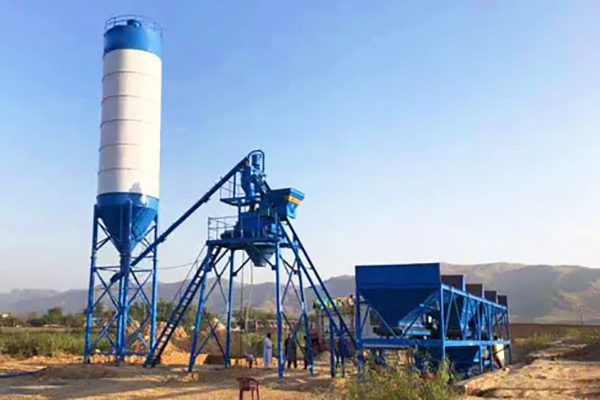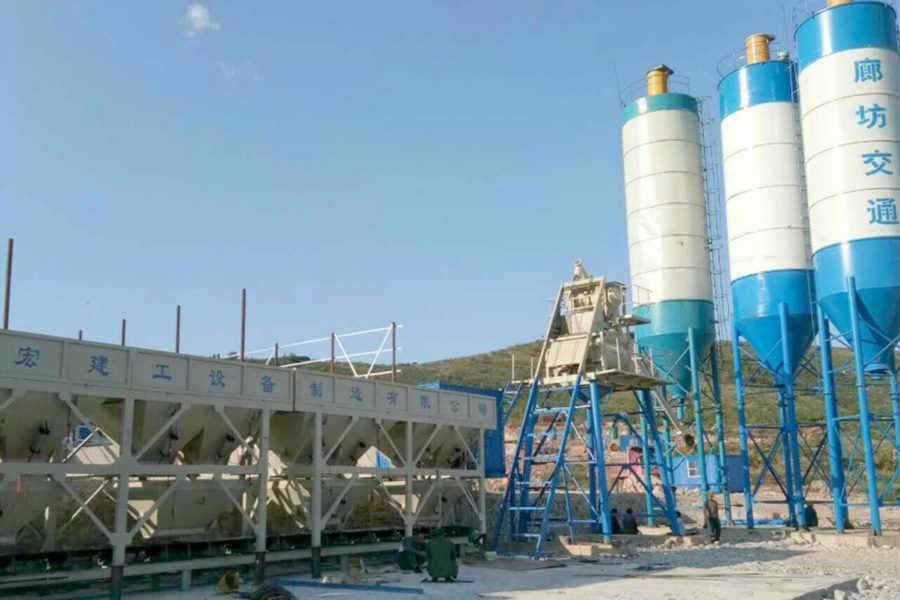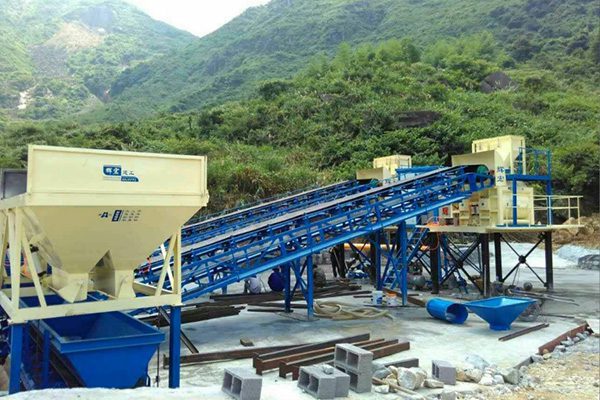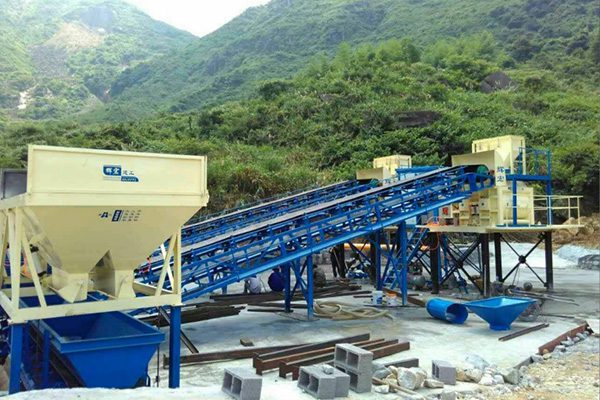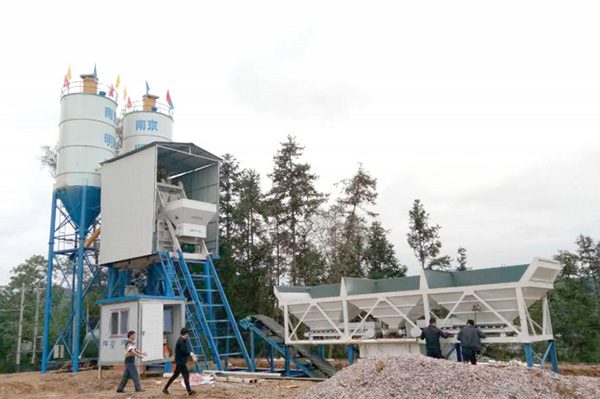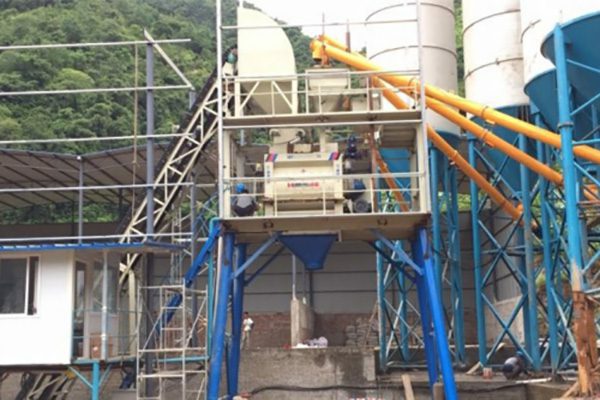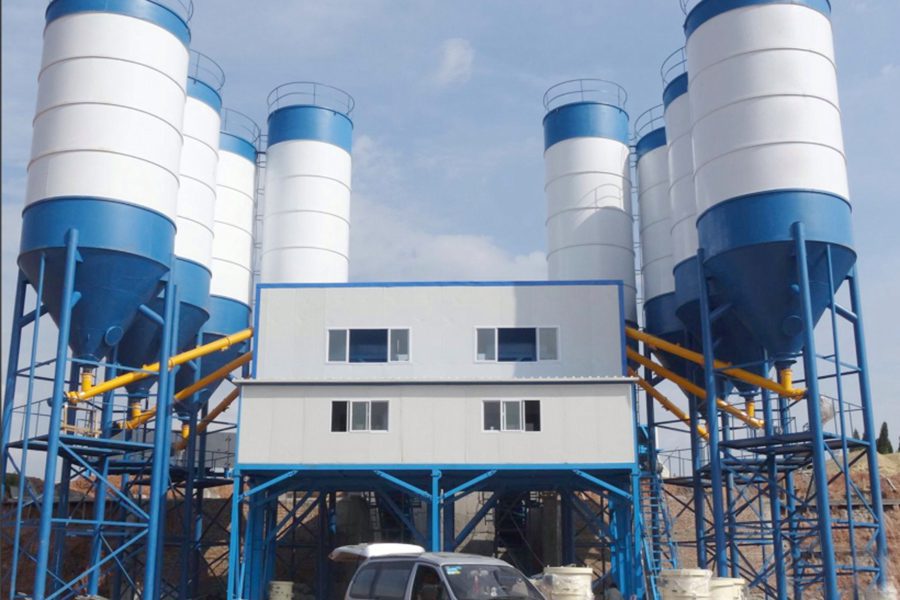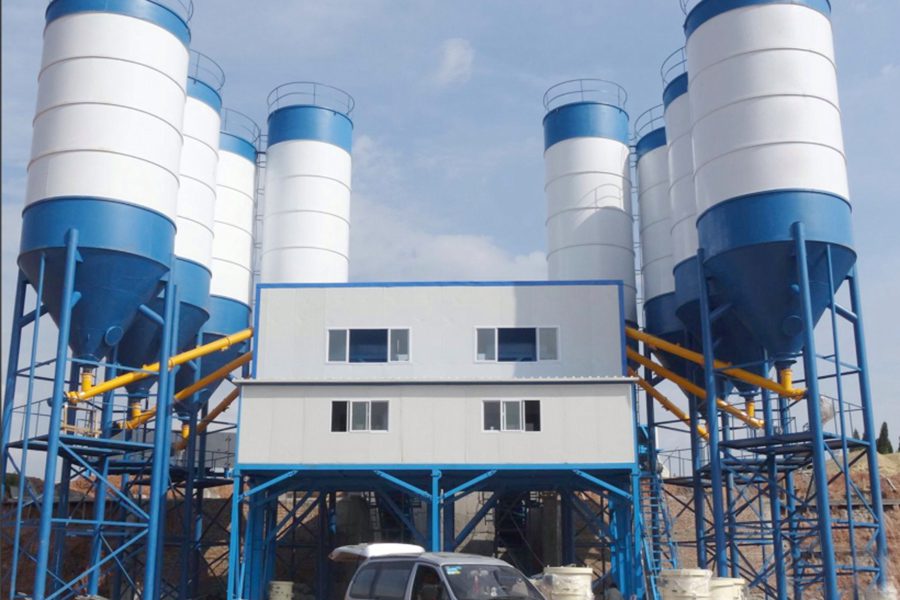Central dosadora de concreto estacionária
Central dosadora de concreto estacionária
Stationary Concrete Batching Plants are often composed of huge twin shaft mixers that are designed to work at full capability, efficiency and reliability for a variety of large scale and high-quality concrete production. Stationary concrete production equipment is built to offer maximum rated production capacity, work long hours, and are yet boast immense flexibility to be used for several projects – especially massive infrastructural and precast concrete projects.
What is Stationary Concrete Batching Plant?
Concrete Batching Plants are automated facility to produce concrete and cement mixture. There are many types of concrete mixing plants include wet mix, dry mix, mobile, stationary, comptact and so on. We working with our clients to provide most suitable concrete mixing plants, reduce investment costs an system risk.
Concrete Batching Plants are modern production facilities that produce concrete used in almost all construction projects with precise weighing and homogeneous mixing technology.
Stationary Belt Type Concrete Plant: Ideal for large-scale projects, offering capacities from 60 to 240 metros cúbicos por hora.
Stationary Skip Type Concrete Plant: Suitable for medium and small projects, with capacities ranging from 15 to 75 metros cúbicos por hora.
Mobile Concrete Batching Plants: Perfect for temporary construction sites, providing capacities of 15 to 120 metros cúbicos por hora.
Continuous Concrete Batching Plants: Specialized for producing roadbed materials.
Invest in a Concrete Batching Plant that Meets Your Exact Needs. Contact Us Today!
Stationary Concrete Plant generally consists of the following units:


- Aggregate Bunker (unit where aggregate is stored)
- Aggregate Weighing Conveyor (Unit where the aggregate weighed precisely weighed under the aggregate bunker)
- Aggregate Transfer Conveyor or Aggregate Transfer Bucket (Unit that carries the weighed aggregate to the mixer)
- Silo de cimento (unit where cement is stored)
- Cement Screw (unit that carries the cement from the cement silo to the cement scale)
- Cement -Water-Additive Scales (units where cement, water and additive are weighed)
- Misturador (a mixer in which the weighed materials are mixed homogeneously and quickly)
- Main Chassis (The unit containing the mixer, cement-water-additive scales, has carrier legs under which a transmixer will enter.)
- Control Cabinet and Computerized Fully Automatic Control System (Concrete is produced automatically according to the concrete recipes entered the system)
- Air Compressor and Pneumatic Equipment (Produces compressed air required for the operation of the facility)
Belt Type Concrete Batching Plant
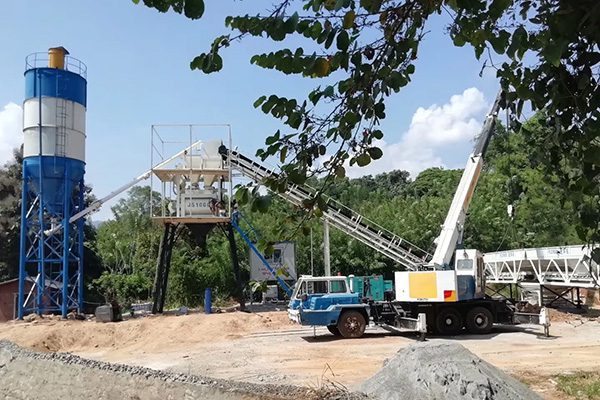
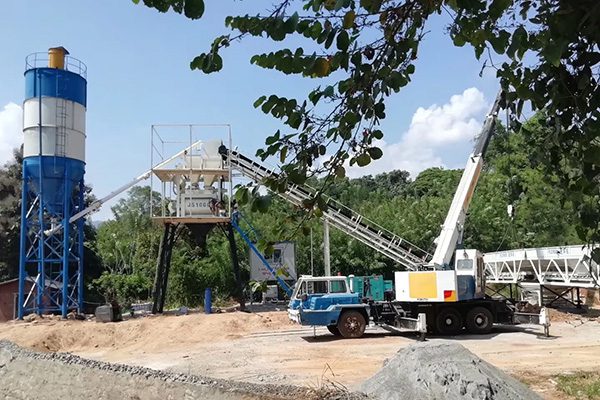
| Modelo | HZS60 |
| Capacidade(m3/h) | 60 |
| Misturador | JS1000 |
| Aggregate Bin | PLD1600 |
| Discharge Height(eu) | 4 |
| Cycle Time(s) | 60 |
| Weighing Accuracy(%) | Agregar: ±2 |
| Cement: ±1 | |
| Water: ±1 | |
| Additive: ±1 |
Skip Hoist Concrete Batching Plant
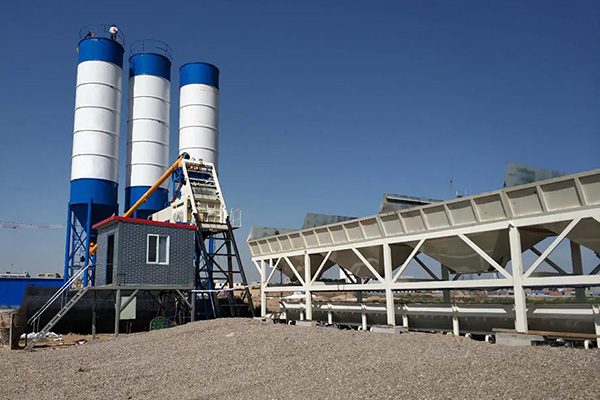

| Modelo | HZS75 |
| Capacidade(m3/h) | 75 |
| Misturador | JS1500 |
| Aggregate Bin | PLD2400 |
| Discharge Height(eu) | 3.8 |
| Cycle Time(s) | 72 |
| Weighing Accuracy(%) | Agregar: ±2 |
| Cement: ±1 | |
| Water: ±1 | |
| Additive: ±1 |
Stationary Concrete Batching Plant Advantages
1- High Production Capacity and High Performance (Wide concrete production ranges from 30 m³ / h up to 200 m³ / h with single mixer, concrete production capacity up to 400 m³ / h with double mixer)
2- High Configuration Flexibility (Thanks to its flexible structure, configuration options that can meet the needs of the user completely)
3- Special Settlement Opportunity Fully Compatible with the Installation Area (settlement alternatives that can fit different installation areas)
4- Durable and Long-Life Main Chassis and Aggregate Bunker Design (Robust construction, safe transportation, long life working and weighing minimizes vibrations and provides precise weighing)
5- Easy and Fast Maintenance Advantage (Wide maintenance platforms, easy and safe access to the main parts and weighing scales of the mixer, special scale solid upper platform)
6- Special Concrete Production Facility (CCR, concrete parquet, concrete pipe, prefabricated element production)
7- Age Type, Dry Type; Wet & Dry Type Concrete Production Facility
Use areas of stationary concrete plants
Ready-mixed concrete producers who manufacture concrete in their own facilities and sell it to other concrete users and construction companies generally prefer stationary concrete plants due to their advantages in mass production, high performance and high flexibility.
Além disso, stationary concrete plants are mostly preferred in construction projects that require high quality concrete production such as roads, barragens, airports and high quality concrete. Além disso, Stationary Concrete Batching Plants are also used in applications that require special concrete production such as RCC (Cylindrical Compacted Concrete), concrete parquet, concrete pipe, prefabricated element production (prefabricated column and beam etc.) production, and hollow concrete floor production.
Stationary Concrete Plant Features
Thanks to its flexible structure, Stationary Concrete Plants offer configuration options that can meet the needs of the users completely and can be designed in a variety of ways.
In stationary concrete plants, aggregate is transported to the mixer level by means of aggregate transfer conveyor or aggregate bucket. Since the aggregate bucket can operate at a steeper angle, it is suitable in cases where the facility should fit in a less area. But generally, the aggregate is transported to the mixer level via the transfer conveyor. In facilities containing aggregate transfer conveyor, aggregate waiting bunker is placed on top of the mixer.
The aggregate required for 1 cycle continuously in the aggregate waiting bunker is kept ready to be sent to the mixer immediately. In this way, aggregate transfer and mixing processes can be separated and the total cycle time can be shortened and concrete production capacity can be increased.
Stationary Concrete Plants can be equipped with different types of mixers
depending on the type of concrete to be produced.
- Single Shaft Mixer (Single Shaft) mixers 0,5 m³; 1, 0 m³;
- Twin Shaft Mixer (Double Shaft) with 2.0 m³ capacities, 1, 0 m³; 2.25 m³, 3.33 m³; 4.0 m³; With 5.0 m³ capacities;
- Planetary Mixers 0,5 m³; 1, 0 m³; It can be in 2.0 m³ capacities.
- Aggregate Bunker can be designed to store aggregates in different capacities per eye (15,20,25,30,40,50 m³) in a range of 3-4-5-6 meshes.
In some fixed concrete plant models, the main chassis (main chassis carrying the mixer) and aggregate bunker can be produced as hot dip galvanized due to its long service life, high durability and precise weighing advantages.
Better weighing accuracy can be achieved when the cement, water and additive weighing scales are placed on the separate weighing frame instead of being transported to the mixer body.
Stationary concrete plants, which are generally designed as wet type, can also be produced as dry type and wet & dry type. Double transmixer discharge possibility, additional weighing scales such as ice, mixrosilica, GGBS and many other options can be added to stationary concrete plants.
It is possible to produce concrete even at -30 ° C by adding special equipment required for working in winter conditions (complete closure of the facility with insulated sandwich panels, aggregate in-bunker steam system, steam generator, electric bunker overhead caps etc.) to fixed concrete plants.
In order to be shipped to overseas, stationary concrete plants are also designed for container transportation. While high capacity mixers are shipped with 40 ‘FR (Flat Rack), all other units can be shipped easily and economically with 40’ OT (Open Top) Containers.








